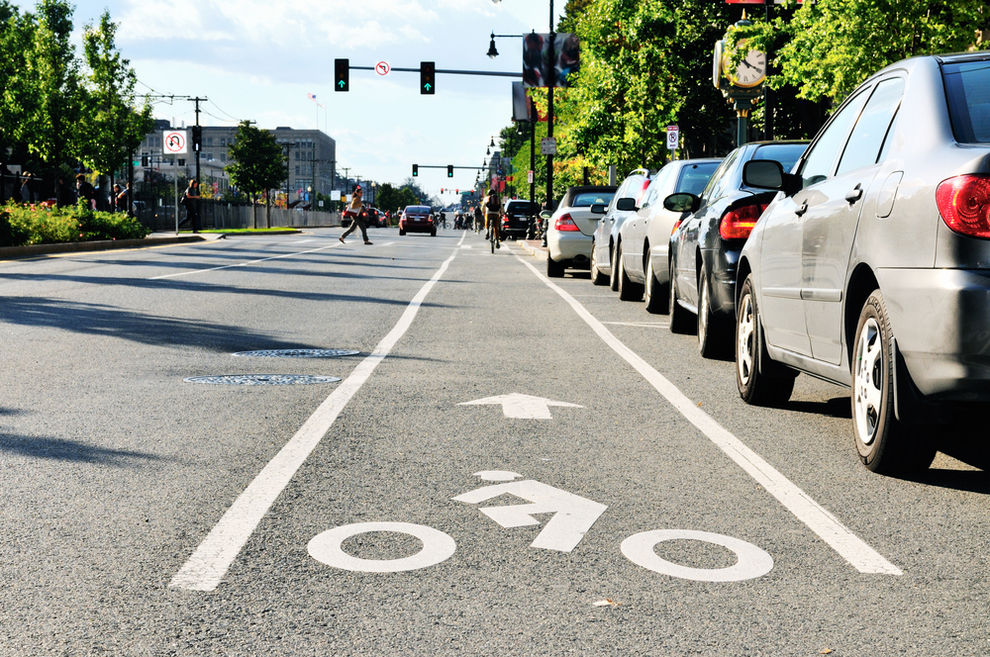While some roads have clearly marked bike lanes, others may leave you wondering where you can legally ride on the road. What if there’s no bike lane or shoulder? The answer to this question depends on many different factors. It can be confusing not only for cyclists but also for motor vehicle drivers, insurance companies, and police officers. It’s not uncommon for a car to fly by a cyclist coming within a couple of inches of them, nearly knocking them off their bike. Reckless drivers place bikers’ lives in danger every day in California. It raises the question, where are we legally allowed to ride?
Where You Can Legally Ride
When biking at the same speed of traffic, you have the same rights as motor vehicle drivers and can ride in the traffic lane. In most cases, you’ll be moving slower than traffic. In this scenario, the law states that cyclists must ride as close to the right side of the road as possible, going in the same direction as traffic. Most motorists don’t understand that cyclists have the right to “take the lane” at certain times. You are allowed to “take the lane” if it’s not wide enough for a vehicle and bike to share side-by-side safely, and for the following exceptions:
- When passing another bicyclist
- Preparing for a left turn
- Avoiding hazards
- When the traffic lane is too narrow to share
- If approaching an area where a right turn is authorized
When riding on a road with a bike lane, you must use the bike lane except for the five exceptions stated previously. When it comes to riding on sidewalks, the law is determined by the individual city and county. The California Department of Transportation prohibits bicycles from riding on freeways and expressways. Additionally, they cannot cross toll bridges unless permitted by the California Department of Transportation.
How To Legally Operate Your Bike
Since cyclists follow many of the same rules and regulations as vehicles, they have to follow similar rules of operation as well. Below are some of the ways you can and cannot operate your bike.
- Wear a helmet: Bicyclists must wear an approved helmet when riding a bicycle.
- Headphones: Bicyclists cannot wear earplugs in both ears or a headset that covers both ears. Hearing aids are not considered earplugs and are allowed.
- Alcohol & drugs: Bicyclists cannot ride when under the influence of drugs or alcohol.
- Carrying articles: Bicyclists cannot hold items that prevent them from using at least one hand on the handlebars.
- Pedestrians: Bicyclists must yield to pedestrians on marked crosswalks or unmarked crosswalks at intersections. They also have to yield to the right-of-way to partially or totally blind pedestrians using a guide dog or predominantly white cane. Similar to vehicles, bicyclists must stop before crosswalks and not in them.
- Parking: Bicyclists cannot leave their bikes on their sides on the sidewalk or park them in a manner that obstructs pedestrians.
Bonnici Law Group
We hope our blog helped clear up where you can legally ride on the road. We understand bicycle laws can be a confusing matter, which is why we’re here to help! If you have any questions about bike laws or bike accidents, feel free to contact us. You can reach us by phone at (619) 259-5199 or contact us directly on our website. If you are searching for a bicycle lawyer in San Diego, our initial consultation is completely free!

Bicycle, Injury, and Disability Legal Team in in Westwood, CA
Westwood, CA, is a lively and diverse neighborhood located in the heart of Los Angeles.
Personal Injury in West Hollywood, CA
West Hollywood, California, is a vibrant and dynamic city in the heart of Los Angeles, renowned for its artistic flair, trendy boutiques, and world-class entertainment scene.


